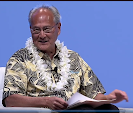It does appear that a partnership between the U.S. federal government and firms developing artificial intelligence is developing. Some examples include the executive branch championing the $500 billion "Stargate" infrastructure initiative led by OpenAI, Oracle, Japan's SoftBank, and the UAE's MGX.
More recently there were big deals to bring cutting-edge chips and data centers to Saudi Arabia and the UAE.
Country | Deal Size / Commitment | Key U.S. Firms Involved | Main Components | Timeline / Notable Details |
Saudi Arabia | $600 billion+ (total package) | Oracle, Google, Salesforce, AMD, Uber, DataVolt, AWS, Qualcomm | - Oracle: $14B, 10-year commitment - DataVolt: $20B in U.S. data centers - $80B in joint tech/AI projects - HUMAIN: up to $10B AMD, $10B Nvidia AI hardware - $5B AWS "AI Zone" - $300B in immediate deals - $1 trillion corridor by 2030 ambition | Announced May 2025; multi-year rollout 1, 2, 5, 7 |
UAE | $1.4 trillion (10-year UAE investment in U.S.); $200B in tech/AI package | G42, Microsoft, Nvidia, Oracle, Cisco, OpenAI, SoftBank, BlackRock, Global Infrastructure Partners | - 500,000 Nvidia AI chips/year to UAE through 2027 - 5GW AI datacenter campus in Abu Dhabi (G42) - Stargate UAE: 1GW OpenAI-led facility - Reciprocal investment in U.S. data centers - $100B Global AI Infrastructure Investment Partnership (GAIIP) | Announced May 2025; phased through 2030 1, 2, 4, 6 |
President Trump also signed a series of executive orders to hasten the deployment of new nuclear power reactors, with the goal of quadrupling total U.S. nuclear capacity by 2050.
Energy Secretary Chris Wright told Congress that AI is "the next Manhattan Project,” warning that losing to China is "not an option.”
That might closely resemble several past efforts by the government to spur economic growth by supporting targeted industries.
Industry/Initiative | Era/Date | Government Role/Support | Outcomes/Impact |
US Arsenals & Manufacturing | 1816–1861 | Collaborative R&D, standardization | Advanced machine tools, standardized parts, global manufacturing leadership 2 |
Erie Canal | 1825 | State-funded infrastructure | Opened Midwest markets, spurred trade and local development 2 |
Pacific Railway Act (Railroads) | 1862 | Land grants, federal loans | Built transcontinental railroad, linked coasts, boosted commerce 2 |
Federal-Aid Highway Act | 1956 | Direct federal funding, infrastructure | Created interstate highway system, expanded commerce, advanced construction tech 2 |
Shipbuilding (WWII, renewed focus) | 1940s, 2020s | Direct contracts, subsidies, tax incentives | Rapid industrial expansion, military and commercial shipbuilding 4 |
Cybersecurity (NIST Framework) | 2013–present | Voluntary standards, collaborative development | Improved critical infrastructure security, public-private trust 3 |
CHIPS and Science Act (Semiconductors) | 2022 | Large-scale subsidies, R&D funding | Domestic chip manufacturing, supply chain resilience, tech leadership 4 |
All that might suggest something for technology investors. In addition to the many startups sure to emerge, some of which will have the opportunity to become quite important, existing technology leaders also will be leaned on by government.
That suggests the normal computing market mechanisms, whereby a new era of computing creates new leaders, might be modified in the early AI era. As legacy firms Microsoft and Apple seemingly survived the transition form the PC era to the present, so other firms such as Alphabet, Meta and Amazon might survive the coming transition to the AI era as well.
That might be fairly unprecedented, but will be assisted by the need for collaboration and support of the federal government to create a big new industry.
